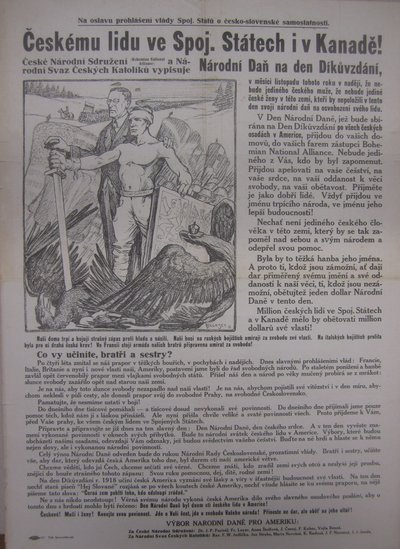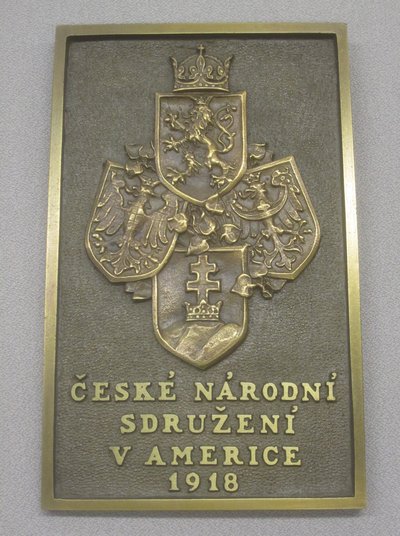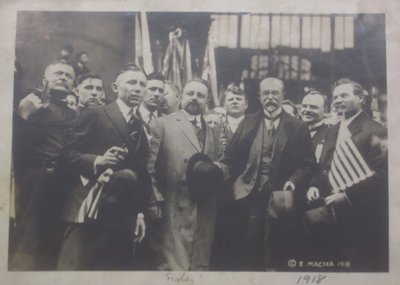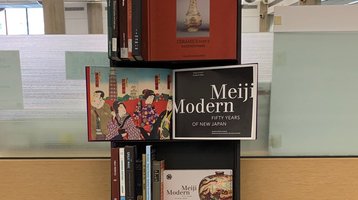“Pro svobodu a samostatnost”: The Struggle for Czechoslovak Independence, 1914-1918
Exhibit Location: The Joseph Regenstein Library, Second Floor
Exhibit Dates: September 26, 2018 – January 7, 2019
On October 28, 1918, the National Committee (Národní výbor) in Prague formally proclaimed the formation of an independent Czechoslovak state and enacted its first laws. This proclamation was the culmination of a four-year political and military struggle to liberate the Czech and Slovak peoples from Austro-Hungarian rule and to give them scope for their own political and cultural self-determination.
The creation of the Czechoslovak Republic brought together two distinct but closely-related ethnic groups – the Czechs and the Slovaks. Although speaking closely related West Slavic languages, these two groups had historically belonged to political spheres: under the dual monarchy of Austria-Hungary, the Czech lands lay in the northwestern part of Cisleithania, the part of the empire ruled by Austria, while Slovak territory formed part of Transleithania, the section of the empire ruled by Hungary. Inasmuch as the Hapsburg rulers of Austro-Hungary favored German language and culture in Austria and Hungarian language and culture in Hungary, both Czechs and Slovaks, deeply affected by movements of national revival in the early 19th century, considered their respective nations to be treated as second-class citizens within Austria-Hungary and sought greater autonomy for themselves.
With the coming of the First World War, Czech and Slovak efforts for autonomy became efforts for independence from Austro-Hungarian rule. Much of this activity took place outside of the Czech and Slovak homelands. After Czech and Slovak leaders in America agreed to join forces to fight for a single shared state, the Czechoslovak National Council in Paris, led by Czech philosopher and future Czechoslovak president Tomáš Garrigue Masaryk, became the organizational center for the Czechoslovak struggle for independence. Volunteer military forces of Czech and Slovak soldiers – the Czechoslovak Legions – sprang up in France, Russia, and Italy, and fought alongside the Allied Forces, winning recognition for their exploits in the field. Czech and Slovak communities abroad, such as the Bohemian National Alliance and the Slovak League in the United States offered vital political, economic, and material support to the cause of independence. The efforts of all these different Czech, Slovak, and Czechoslovak organizations led to recognition of Czechoslovak national sovereignty by the Allied nations and the formation of the Czechoslovak Republic. This two-case exhibit includes publications, pictures, maps, and artifacts that document and celebrate these varied efforts towards Czechoslovak independence.
The exhibit is dedicated to the memory of June Pachuta Farris, former Slavic Librarian and a passionate advocate of the Archives of Czechs and Slovaks Abroad (ACASA).





